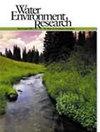摘要
采用三维荧光(激发-发射矩阵,EEM)光谱和多元平行因子分析(PARAFAC)模型,对孟加拉国、马来西亚、澳大利亚、印度、新加坡、挪威、日本、越南和台湾等不同国家的多个品牌的瓶装饮用水进行了研究。荧光溶解有机物(DOM)成分,如微生物加工的酪氨酸、富勒烯酸(M)和类色氨酸在瓶装饮用水样品中的最大强度/浓度分别为 70.8%、16.7% 和 12.5%。在澳大利亚和越南的一个品牌中,所有荧光 DOM 成分的总强度分别最小和最大。与日本不同,在孟加拉国、马来西亚、印度和台湾,瓶装饮用水中 DOM 成分的浓度与地下水、淡水和海水相当或更高。大肠埃希氏菌的浓度是通过其与微生物加工色氨酸样成分的显著相关方程来量化的。除了马来西亚和孟加拉国分别有 60% 和 20% 的瓶装水样本含有大肠杆菌外,其余研究国家的瓶装水样本都含有大肠杆菌,属于中高危样本。本文讨论了先前发现的瓶装饮用水中矿物质浓度超过可接受限值对健康造成的不利影响。瓶装饮用水中如此高浓度的 DOM 成分也让人更加怀疑传统水处理技术和生物膜控制的效率。研究国家的经济指标表明,除了预算和劳动力工资外,意愿和适当的管理知识也是确保瓶装饮用水安全的必要条件。实践者观点: 蛋白质类成分的强度高于腐殖质类成分,这证实了微生物的丰富性 在最大的样本中,大肠杆菌的风险为中等至非常高 孟加拉国品牌中过量的铅、铝和 PO4 3- 矿物质对健康有不利影响 在 DOM 和生物膜控制方面,饮用水处理技术的效率低下 劳动工资、意愿和知识对饮用水处理的重要性。Bottled drinking water of numerous brands from different countries, including Bangladesh, Malaysia, Australia, India, Singapore, Norway, Japan, Vietnam, and Taiwan, were studied using three-dimensional fluorescence (excitation-emission matrix, EEM) spectroscopy and multivariate parallel factor analysis (PARAFAC) model. Fluorescent-dissolved organic matter (DOM) components such as microbial processed tyrosine-, fulvic acid (M)-, and tryptophan-like had maximum intensity/concentration at 70.8%, 16.7%, and 12.5% bottled drinking water samples, respectively. The total intensity of all fluorescing DOM components was minimum and maximum in one of the brands from Australia and Vietnam, respectively. Unlike in Japan, the concentrations of DOM components in bottled drinking water were comparable to or higher than groundwater, freshwater, and marine water in Bangladesh, Malaysia, India, and Taiwan. The concentration of Escherichia coli was quantified from its significant correlation equation with the microbial-processed tryptophan-like component. Apart from 60% and 20% of bottled water samples from Malaysia and Bangladesh, the remaining samples of studied countries were medium to very high-risk because of E. coli signatures. The adverse health impacts from previously identified over-acceptable-limit mineral concentrations in bottled drinking water are discussed. DOM components at such concentrations in bottled drinking water also strengthened doubts about the efficiency of conventional water treatment techniques and biofilm control. Economic indicators of the studied countries affirmed that willingness and proper management knowledge are necessary to ensure safe bottled drinking water besides budget and labor wages. PRACTITIONER POINTS: Higher protein-like components intensity than humic-like affirmed microbial abundance Risks for E. coli availability was medium to very high in maximum samples Adverse health impacts for overlimit Pb, Al, and PO4 3- minerals in Bangladeshi brands Inefficiency of drinking water treatment techniques in DOM and biofilm control Importance of labor wage, willingness, and knowledge for drinking water treatment.

 求助内容:
求助内容: 应助结果提醒方式:
应助结果提醒方式:


